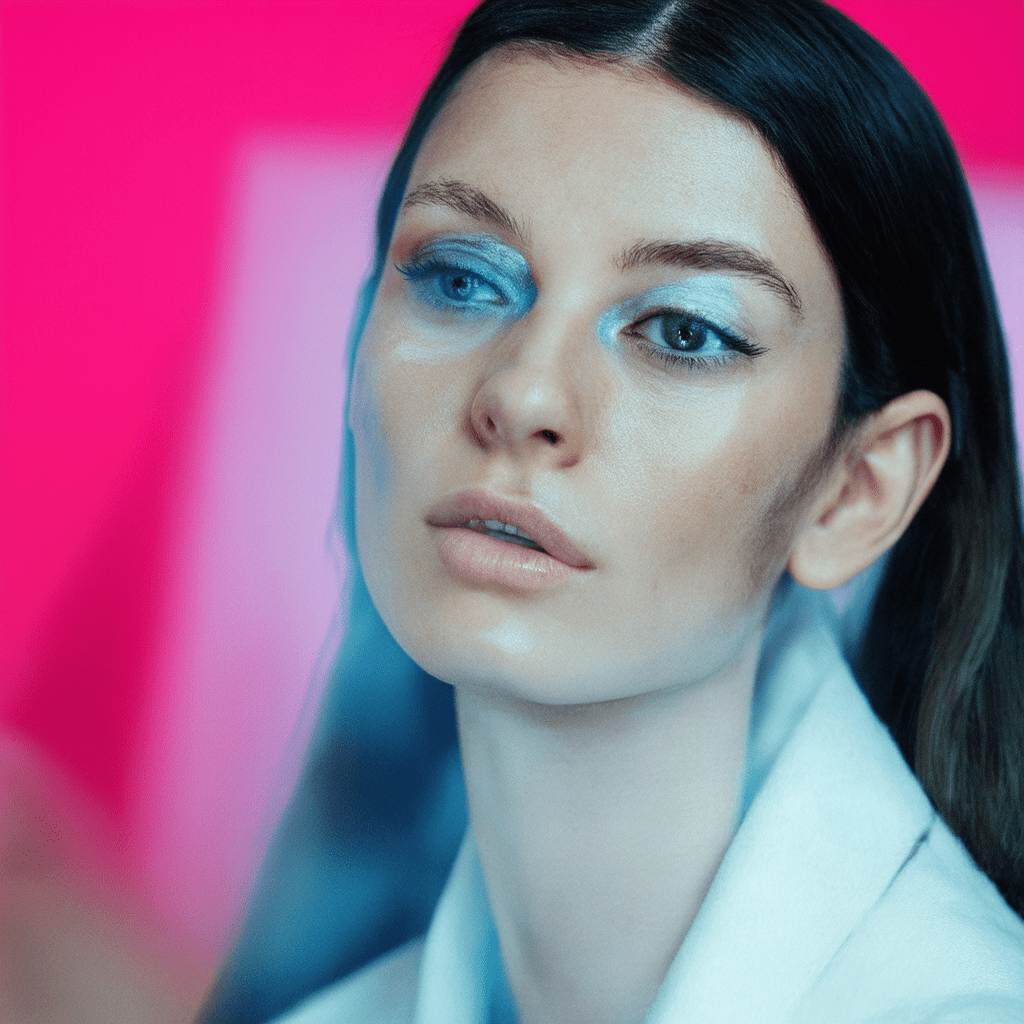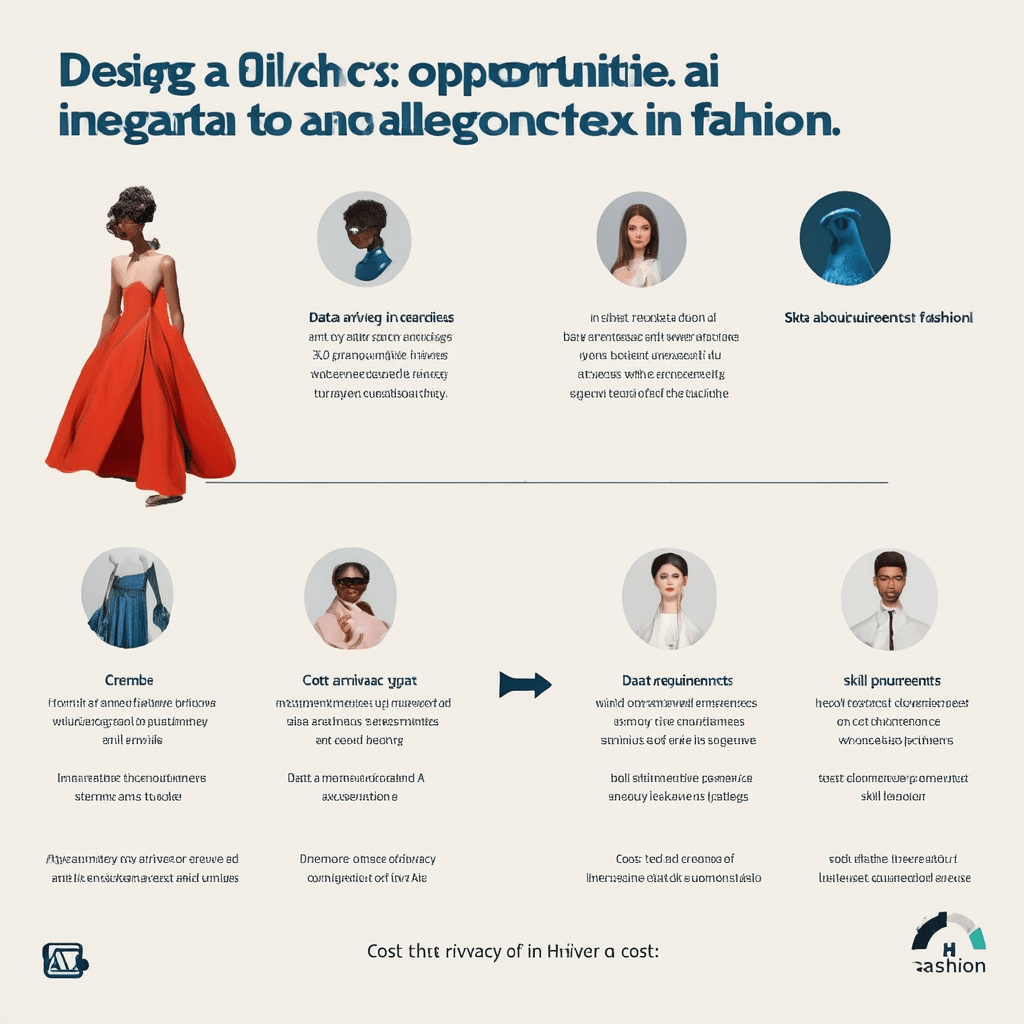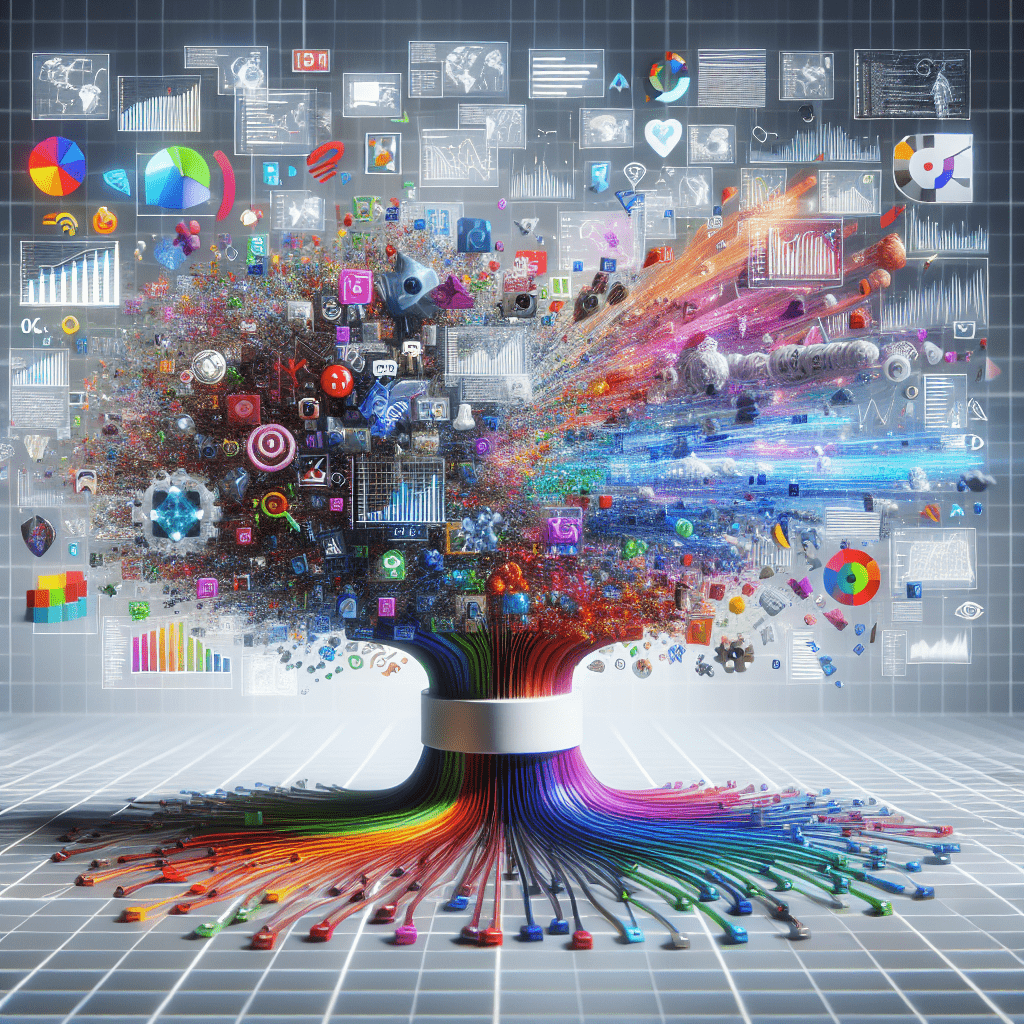Introduction: A Deep Dive into AI in Fashion and Design
Table of Contents
AI is turning the fashion and design world on its head, and it’s thrilling to witness. In the past, technological advancements like the sewing machine changed the production landscape, making clothing more accessible. Similarly, e-commerce revolutionized shopping by bringing boutiques to our fingertips. Today, AI is the catalyst for a fresh innovation wave that feels like both a natural evolution and a bold leap forward. (Read our full guide on AI Tools and Applications.)
In my experience, AI’s ability to process vast amounts of data has refined fashion forecasting. Designers now predict trends with precision, analyzing consumer preferences, past sales, and social media chatter to anticipate the next big thing. For instance, brands like Zara use AI-driven analytics to decide which styles to produce and in what quantities, minimizing waste and maximizing sales.
Moreover, AI is personalizing the shopping experience in ways we’ve never seen before. Virtual stylists, powered by machine learning, curate wardrobes tailored to individual tastes, ensuring each shopping encounter feels unique and bespoke. Apps like Stitch Fix use algorithms to match users with outfits, transforming shopping from a chore into a personalized experience.
From a practical standpoint, AI also streamlines the design process. Tools like CLO 3D enable designers to visualize garments in a virtual space before creating physical samples, saving time and resources. This tech empowers designers to experiment with styles and fits in a risk-free virtual environment.
The key takeaway here is that AI isn’t just a tool; it’s a partner in creativity. It’s not replacing designers but enhancing their capabilities, allowing them to focus more on the art and less on the grind. The future of fashion is not just about what we wear but how we create, consume, and connect with our clothes. And AI is at the heart of it all, crafting a seamless blend of technology and style that promises to redefine the industry.

Key Benefits and Advantages
AI’s intersection with fashion is more than just a technological upgrade; it’s a seismic shift in how we define, produce, and consume style. Let’s start with trend forecasting. Traditionally, spotting a trend involved a lot of guesswork, intuition, and time-consuming analysis of runway shows, street style, and consumer behavior. Now, AI can sift through billions of data points—from social media posts to online searches—at lightning speed. A fashion brand can know what’s next before it’s even a ’next’. This isn’t just about being ahead of the curve; it’s about reshaping the curve entirely.
In manufacturing, AI-driven automation is revolutionizing the production line. Think about the precision of AI cutting machines: they can reduce fabric waste by optimizing every inch of material, which is not just cost-effective but also environmentally friendly. AI systems can also adjust patterns and fit based on real-time consumer feedback, ensuring that what gets produced is exactly what people want. This level of customization was unheard of in the past, where mass production often led to surplus and waste.
On the retail side, AI’s role in personalizing the shopping experience is nothing short of transformative. Algorithms analyze customer data to tailor recommendations that feel eerily spot-on. Imagine a virtual shopping assistant that knows your style preferences better than you do. This leads to higher satisfaction rates, fewer returns, and a more engaged customer base. Plus, AI can predict demand more accurately, reducing overproduction and its environmental impact.
The ultimate promise of AI in fashion is a world where clothing is not just faster to market and personalized, but also sustainable. By cutting excess and focusing on precision, AI makes fashion not just smarter, but kinder to our planet.
- Stitch Fix: Imagine a service where your wardrobe evolves with you, without the hassle of endless shopping trips. Stitch Fix is a pioneer in this space, using AI to tailor clothing recommendations to its users. It’s not just about algorithms crunching numbers; there’s a personal touch involved. Human stylists add their flair, blending their expertise with AI insights to curate outfits that feel just right. In my experience, the magic lies in how AI learns from feedback, continuously improving its suggestions. This hybrid approach makes each shipment feel like it was handpicked just for you.
- Adidas: Staying ahead in the fashion game requires more than just creativity; it demands an understanding of what consumers want. Adidas leverages AI not just for innovation, but to anticipate trends in footwear. By analyzing vast datasets, machine learning helps design shoes that resonate with shifting customer desires. Think of it as having a pulse on the market, where AI interprets data points like social media trends or purchasing patterns to predict the next big thing in sneakers. This approach doesn’t just keep Adidas relevant; it positions them as leaders in a competitive market.
- H&M: Fast fashion often gets criticized for waste, but H&M is tackling this issue head-on with AI. Their AI algorithms optimize the supply chain, ensuring that inventory levels match demand without overproduction. This isn’t just about cutting costs; it’s about sustainability. By reducing excess inventory, H&M minimizes waste, which is a significant step towards eco-friendly practices. It’s a practical example of how technology can drive efficiency while also aligning with global sustainability goals.
- The Yes: Personalization is the buzzword in retail, and The Yes is tapping into this trend with AI. Unlike traditional shopping experiences, The Yes offers a platform that learns from each click, purchase, and pause. This adaptive learning means that the more you interact, the better it understands your style. It’s like having a personal shopper who knows your tastes better than you do. From a practical standpoint, this means less time browsing and more time enjoying pieces that truly fit your style.
- Nike: Predicting what customers will want next is no easy feat, but Nike is doing just that with AI. Their use of predictive analytics transforms raw data into actionable insights, forecasting demand with impressive accuracy. This isn’t just about stocking the right products; it’s about enhancing the shopping experience. Personalized recommendations powered by AI make each visit to Nike’s platform feel tailored. It’s like having a fitness companion that not only understands your style but also anticipates your next move, ensuring you’re always a step ahead.
How It Works: A Practical Explanation
AI’s ability to predict fashion trends is reshaping the industry by leveraging an immense amount of data from sources like social media, online searches, and even sales patterns. At the core of this capability lie neural networks and natural language processing, which work together to identify subtle patterns and shifts in consumer behavior. In my experience, the power of AI in this field can’t be overstated. It allows designers and brands to stay ahead of the curve, creating collections that are not only timely but also precisely aligned with what consumers desire.
Consider how brands such as Zara and H&M utilize AI to maintain their competitive edge. They don’t just look at what was popular last season. Instead, they analyze consumer sentiment in real-time, scanning social media for mentions and hashtags related to fashion. This immediate feedback loop enables these brands to adjust their offerings rapidly, ensuring that they remain relevant and appealing to their audience. From a practical standpoint, this means less guesswork and more precision in production, which ultimately leads to a reduction in waste as unsold items become less of a problem.
Moreover, AI’s predictive power extends beyond just fashion items. It can anticipate broader trends such as sustainable materials or seasonal colors that might dominate the next season. For instance, by analyzing search data and consumer discussions around eco-friendly fashion, AI can signal a shift towards sustainable fashion months before it becomes mainstream. This foresight is invaluable, allowing brands to adjust their supply chain and marketing strategies accordingly. The key takeaway here is that AI doesn’t just predict trends—it empowers brands to act on these insights swiftly, ensuring they not only meet consumer expectations but often exceed them.

Case Study: A Real-World Example
AI’s journey in the fashion world is nothing short of transformative. A few years back, AI was merely dipping its toes in the fashion waters, primarily handling straightforward tasks like crunching numbers for data analysis or predicting next season’s trends. Fast forward to today, and it’s hard to imagine the industry without it.
Take personalized shopping experiences, for instance. AI algorithms sift through mountains of data—everything from a shopper’s previous purchases to their social media activity—to tailor recommendations that feel almost eerily spot-on. Brands like Stitch Fix have taken this to the next level by using AI to match customers with clothing that perfectly fits their style and size preferences. It’s like having a personal stylist who knows your wardrobe better than you do.
On the sustainability front, AI is a game-changer. Consider the waste problem faced by the industry. AI helps tackle this by optimizing the supply chain. Platforms like H&M’s “CleverCare” use AI to predict demand more accurately, reducing overproduction and minimizing waste. Moreover, AI-powered tools can analyze patterns and suggest fabric combinations that are not only cost-effective but eco-friendly.
In my experience, the real magic of AI in fashion lies in its ability to merge creativity with practicality. For designers, AI tools are like having an extra set of hands—or rather, an extra mind—that can sort through countless design permutations, suggesting new patterns or color palettes that might have been overlooked. The key takeaway is clear: AI is no longer a futuristic concept in fashion; it’s a crucial thread woven into the industry’s fabric, driving both innovation and efficiency.
Conclusion: Key Takeaways
Fashion and technology have always had a symbiotic relationship, but the infusion of AI into this partnership is transforming the industry in unprecedented ways. Imagine a world where your wardrobe not only reflects your unique aesthetic but is also sustainably produced and tirelessly innovative. AI is making that possible by refining every step of the fashion journey—from concept to closet.
Consider trend prediction. AI algorithms sift through mountains of social media posts, runway shows, and global sales data to forecast what will be the next big thing. This isn’t just about predicting the popularity of a color or style; it’s about understanding the cultural zeitgeist and anticipating consumer desires before they even arise. For instance, AI-driven platforms like Heuritech use computer vision to analyze images and provide brands with insights that inform strategic decisions.
In the realm of design, AI is pushing boundaries by enabling creators to experiment without limits. Take AI-driven 3D printing, for example. Designers can now prototype faster than ever, allowing for rapid iterations and a level of customization previously unthinkable. This technology is not just about speed; it’s about sustainability too. By utilizing precise material amounts and optimizing designs for minimal waste, 3D printing contributes to more eco-friendly production processes.
Shopping experiences are also set for a high-tech overhaul. Virtual reality fitting rooms are emerging as a game-changer, offering consumers the ability to try on clothes from the comfort of their homes. This not only enhances convenience but also reduces the need for physical inventory, cutting down on waste. Retailers like Zara are already experimenting with Augmented Reality to create interactive shopping experiences that merge the digital and physical.
The fusion of AI and fashion is far from a fleeting trend; it’s a foundational shift. As AI evolves, it will continue to set new standards, making fashion more inclusive, responsive, and innovative. This collaboration isn’t just about shaping trends—it’s about redefining the very future of design, creating a world where fashion is as personal as it is progressive.

